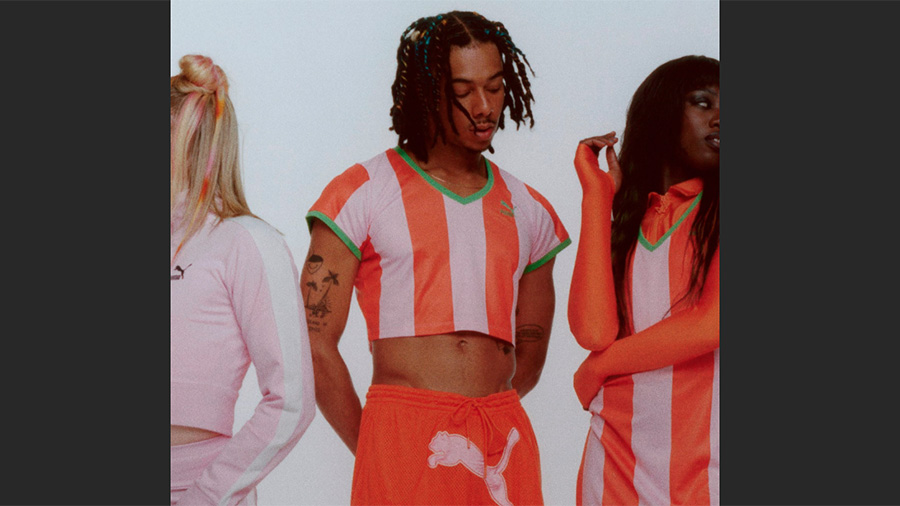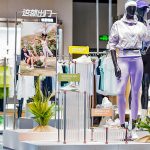Puma SE scored the best quarter in the company’s history both from a sales and operating earnings standpoint as inventory flow improved to support healthy demand. The company also reiterated its outlook for the year despite warning about a wide range of market volatility.
“Improved product availability due to a more stable supply chain, better than expected sell-through, and Puma’s continued global brand momentum overcompensated all the negative external factors,” said Bjørn Gulden, CEO, Puma, on a media call.
He added, “Our performance categories like running, soccer and basketball continue to do very well. We still see strong demand for Footwear, but we also observe that high inventory levels in the market, especially for apparel, have led retailers to order more cautiously than a year ago. With almost all our markets up double-digit, we continue to see a strengthening of the Puma brand and our sales globally. We expect continued volatility in the market during the fourth quarter but are confident that we can deliver according to our full-year outlook.”
In the quarter, sales jumped 16.9 percent on a currency-adjusted basis (23.9 percent reported) to €2.35 billion ($2.37 bn).
By region, sales in the Americas grew 18.8 percent currency-adjusted (33.1 percent reported), to €931.8 million. Sales in EMEA gained 18.5 percent currency-adjusted (19.4 percent reported) to €971.7 million, driven by strong growth across almost all key markets in Europe. The Asia/Pacific region recorded sales growth for the first time this year, up 9.8 percent currency-adjusted (16.6 reported) to €450.9 million. Gulden said while COVID-19-related lockdown measures still impacted the business in Greater China, other key markets in Asia/Pacific delivered strong growth.
By product category, sales in Footwear were up 33.2 percent currency-adjusted (40.8 percent reported) to €1.19 billion while Apparel sales grew 9.9 percent currency-adjusted (16.3 percent reported) to €855.0 million. The gains in both Footwear and Apparel were attributed to continued strong demand for its Performance categories, including Running & Training, Teamsports, Basketball, and Sportstyle. Sales in Accessories were down 10.2 percent currency-adjusted (negative 3.6 percent reported) to €306.8 million because of a softer leg and bodywear business, especially in North America.
Puma’s Wholesale business advanced 19.9 percent currency-adjusted to €1,864.6 million and its DTC business was up 6.5 percent currency-adjusted to €489.7 million. Sales in owned & operated retail stores increased 4.2 percent currency-adjusted and e-commerce climbed 11.8 percent currency-adjusted. Gulden said, “We continued to focus on our strategy of being the best partner for our retailers, which supported the strong growth in our Wholesale distribution channel. At the same time, better product availability led to stronger growth in DTC, predominantly in e-commerce.”
Gross margins decreased 60 basis points to 46.8 percent, mainly due to higher sourcing prices due to raw materials and freight rates and an unfavorable channel mix, while price adjustments and currencies had a positive impact.
Operating expenses climbed 25.8 percent to €853.2 million due to higher marketing expenses, a higher number of retail stores in operation and higher sales-related distribution costs. Because of ongoing operational inefficiencies due to COVID-19, especially in supply chain and warehousing, operating expense as a percent of sales increased to 36.2 percent versus 35.7 percent in the year-ago quarter.
EBIT (earnings before interest and taxes) increased 12.6 percent to €257.7 million while the EBIT margin eroded to 10.9 percent from 12.0 percent a year ago.
Net earnings grew 1.8 percent to €146.4 million with the smaller gain versus EBIT attributed to negative currency exchanges.
Inventories at the quarter’s end were up 72.3 percent to €2,350.2 million. The current inventory level is impacted by currency effects, higher raw material prices, freight rates, and earlier product purchasing. In addition, the third quarter of last year was comparably low due to COVID-19-related factory closures in South Vietnam.
Looking ahead, Gulden said Puma continues to navigate a highly uncertain geopolitical, macroeconomic and competitive environment. He said, “The situation in Ukraine, a global energy crisis, persistent inflation and rising interest rates are leading to uncertain consumer behavior and volatile demand. COVID-19-related restrictions are still impacting business in Greater China, and higher freight rates and raw material prices continue to put pressure on margins. At the same time, the overall inventory levels have increased at both retailers and brands. The higher inventory levels, combined with uncertainty and volatility in the markets, are leading to increased promotional activity and retailers ordering later and more conservatively.”
Puma nonetheless reiterated its 2022 outlook for currency-adjusted mid-teens sales growth and an operating result (EBIT) in a range of €600 million to €700 million, up from €557 million in 2021. Puma’s net earnings are expected to improve accordingly. Gross profit margin and operating expense rate improvement will continue to depend largely on the extent and duration of the ongoing negative impacts.
In line with previous expectations, inflationary pressures from higher freight rates and raw material prices, as well as operational inefficiencies due to COVID-19 and the Ukraine crisis are expected to weigh on profitability in 2022.
Gulden said, “In line with the strategy, Puma will continue to focus on managing short-term challenges without compromising the mid-term momentum of the brand. Consequently, sales growth and market share gains will have priority over short-term profitability. The strong and profitable growth in the first nine months of the year, a strong order book, an exciting product line-up, as well as very good feedback from retailers and consumers, make us confident for the mid-term success and growth of Puma.”
Photo courtesy Puma
















